Known for its eruption in 1980, which spewed massive clouds of ash, today Mount St. Helens National Volcanic Monument beckons visitors with a combination of history and stellar outdoor recreation.
Climb to the crater rim, hike subterranean lava tubes, kayak in clear mountain lakes, shred blast-zone mountain bike trails or take a guided hike with a geologist. Best of all, Mount St. Helens offers all-season recreation. While summer draws the most crowds, the other three seasons offer plentiful opportunities for hiking, paddling, fishing, snowshoeing, snowmobiling, and cross-country skiing. Read on for how to make the most of your visit.
Getting to Mount St. Helens
Mount St. Helens is located in southwest Washington east of Interstate 5. The main entrance on the west side of the mountain is on State Route 504, which leads to the Science and Learning Center at Coldwater (open daily in the summer and weekends in the winter) and the Johnston Ridge Observatory (currently closed).
Important Closure Notice: State Route 504 is currently closed past the Science and Learning Center at Coldwater (milepost 45.2) due to a landslide. The Johnston Ridge Observatory, a popular visitor center at the end of highway, will remain closed through 2026. Check the Forest Service page for updates.
Although the end of the highway is closed, the drive along State Route 504 offers scenic viewpoints like Castle Lake and Loowit, as well as access to Coldwater Lake.
Other access points can be found in the south and east. Driving to Cougar, the southern gateway, takes about 3.5-4.5 hours from Seattle and an hour from Portland. On the east and south sides of the monument, a National Forest Recreation Pass ($5 day per vehicle, $30 annual) is required. You can pick one up at self-service pay stations and Forest Service offices.
When to Visit Mount St. Helens
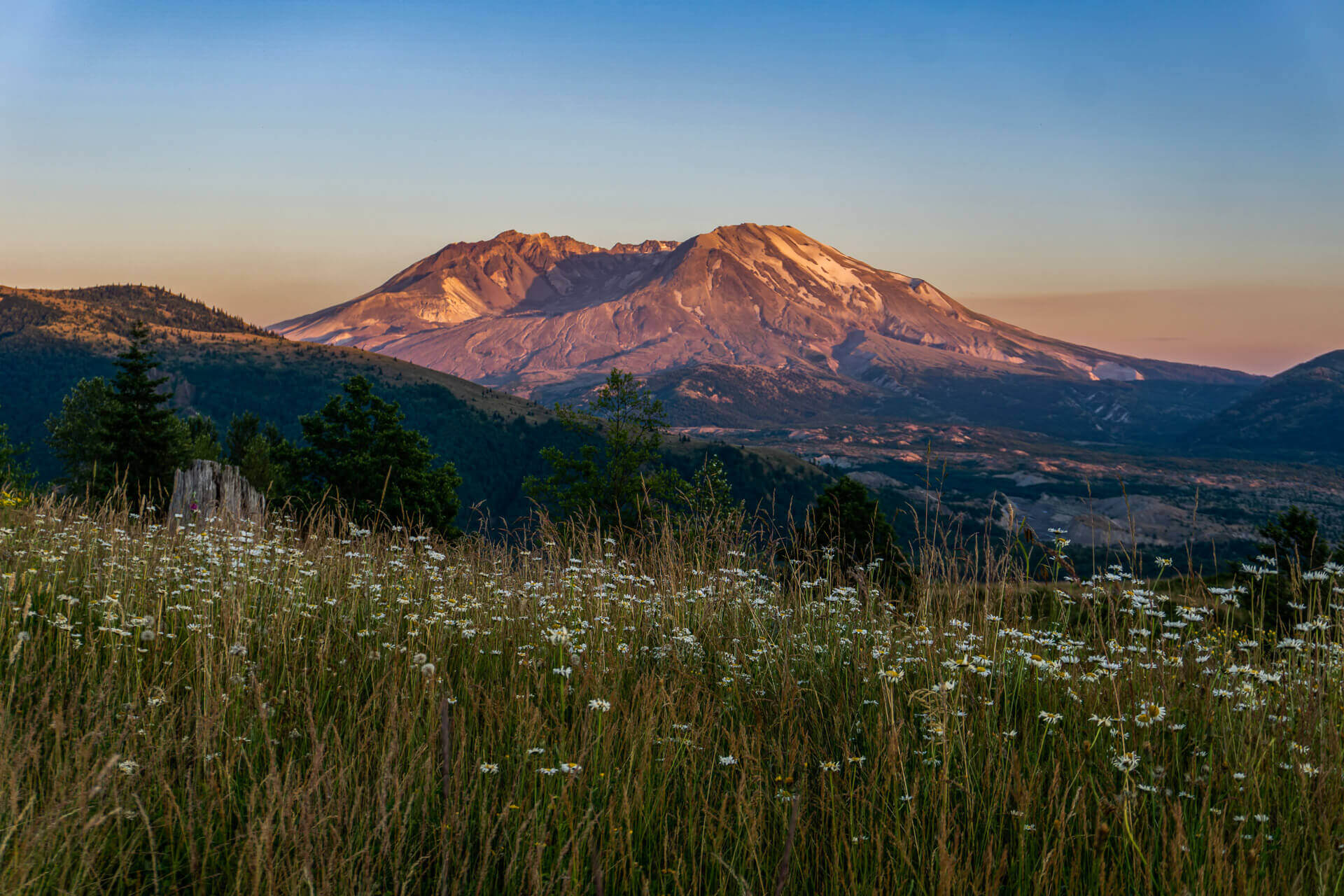
Summer is the busiest season, often drawing significant crowds. Amanda Bonney, a Mount St. Helens visitor services assistant, recommends visiting mid-week and arriving early in the morning to secure parking.
“Crowds are thinner the first and last week of summer break,” Bonney notes. In the fall, crowds thin out, leaving visitors to enjoy autumn colors, milder weather, and fewer insects. There are also stellar, low-crowd days in spring, but be prepared to run into snow.
Travel Tip: Be sure to secure reservations for popular areas. Both the Lewis River Recreation Area and the Ape Caves trail have implemented reservation systems with a fee of $2 per vehicle. Timed reservations are always required to visit Ape Cave during the open season, from May through October. For Lewis River, reservations are required June through September.
Things to Do at Mount St. Helens
Take a Hike
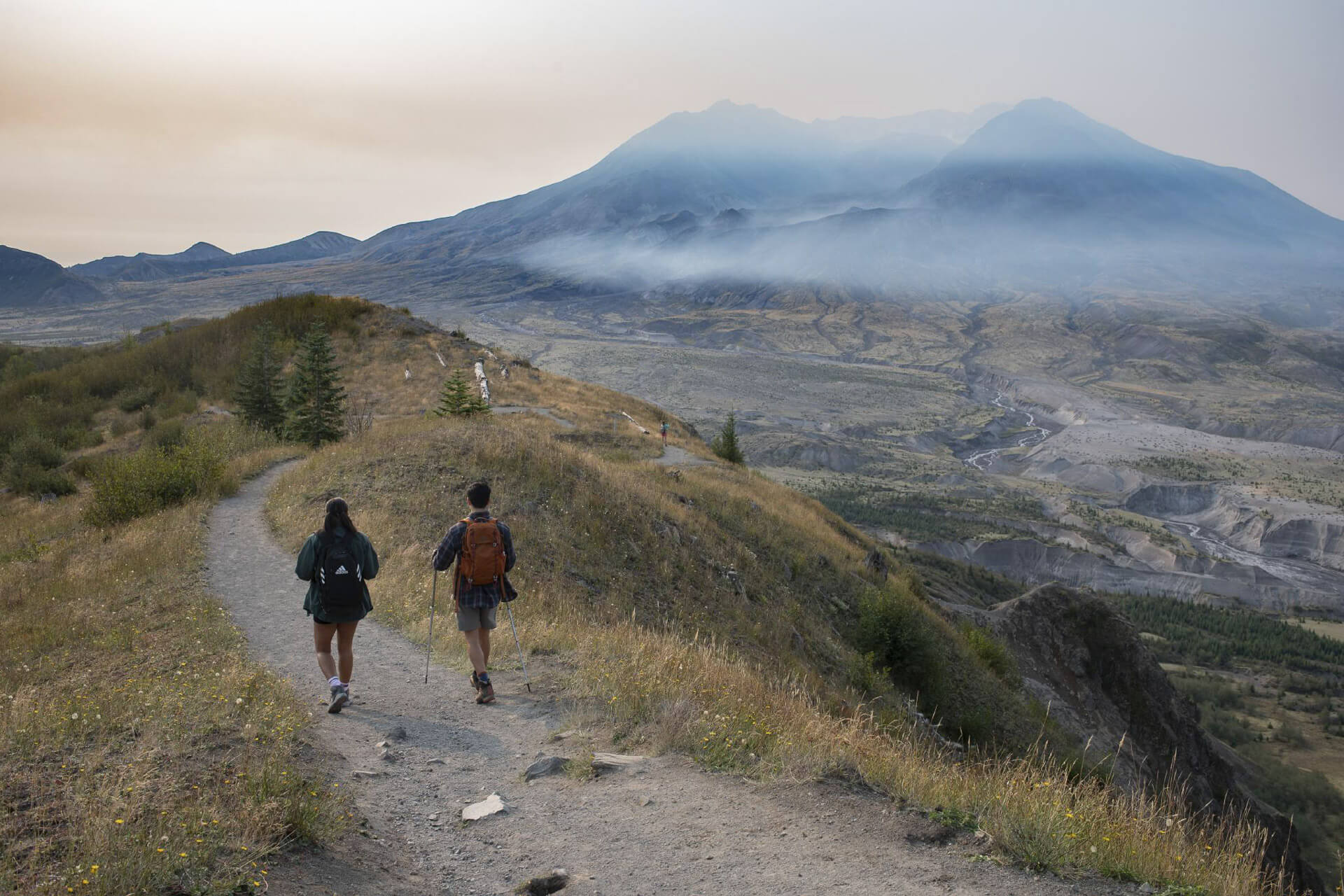
For hikers, the Mount St. Helens area has a little of everything, from lava tubes to waterfalls. Far above ground is Coldwater Peak. The trail to the summit (12 miles roundtrip, 3,100 feet elevation gain) provides scenic mountain views. A landslide currently prevents hikers from starting at the Johnston Ridge Observatory, but the trail can still be accessed from South Coldwater Trailhead (adding a couple of miles).
Choose from a number of short, accessible trails such as the Birth of a Lake Interpretive Trail and the Johnston Ridge Eruption Trail (currently closed due to a landslide), or head hit the Lewis River Falls trail, an 8.8-mile relatively flat tour de force of waterfalls. To circumnavigate Mount St. Helens and tour much of its varied terrain, advanced backpackers can take on the 32-mile Loowit Trail.
Visit Ape Caves
Due south of the mountain, the Ape Caves trail (2.8 miles, 350 feet of elevation gain) navigates the third-largest lava tube in North America. Hiking through the Upper Cave requires some dexterity, fitness, and willingness to scramble and duck among the fascinating features of the cavern. After 1.4 miles, hikers exit the cave and loop back on a trail. Alternatively, an easier shorter option (1.5 miles round trip) is the Lower Cave, which is more spacious and less technical.
Travel Tip: Open May through October, the Ape Caves trail requires a reservation to limit foot traffic and protect the delicate subterranean environment.
Climb the Mountain
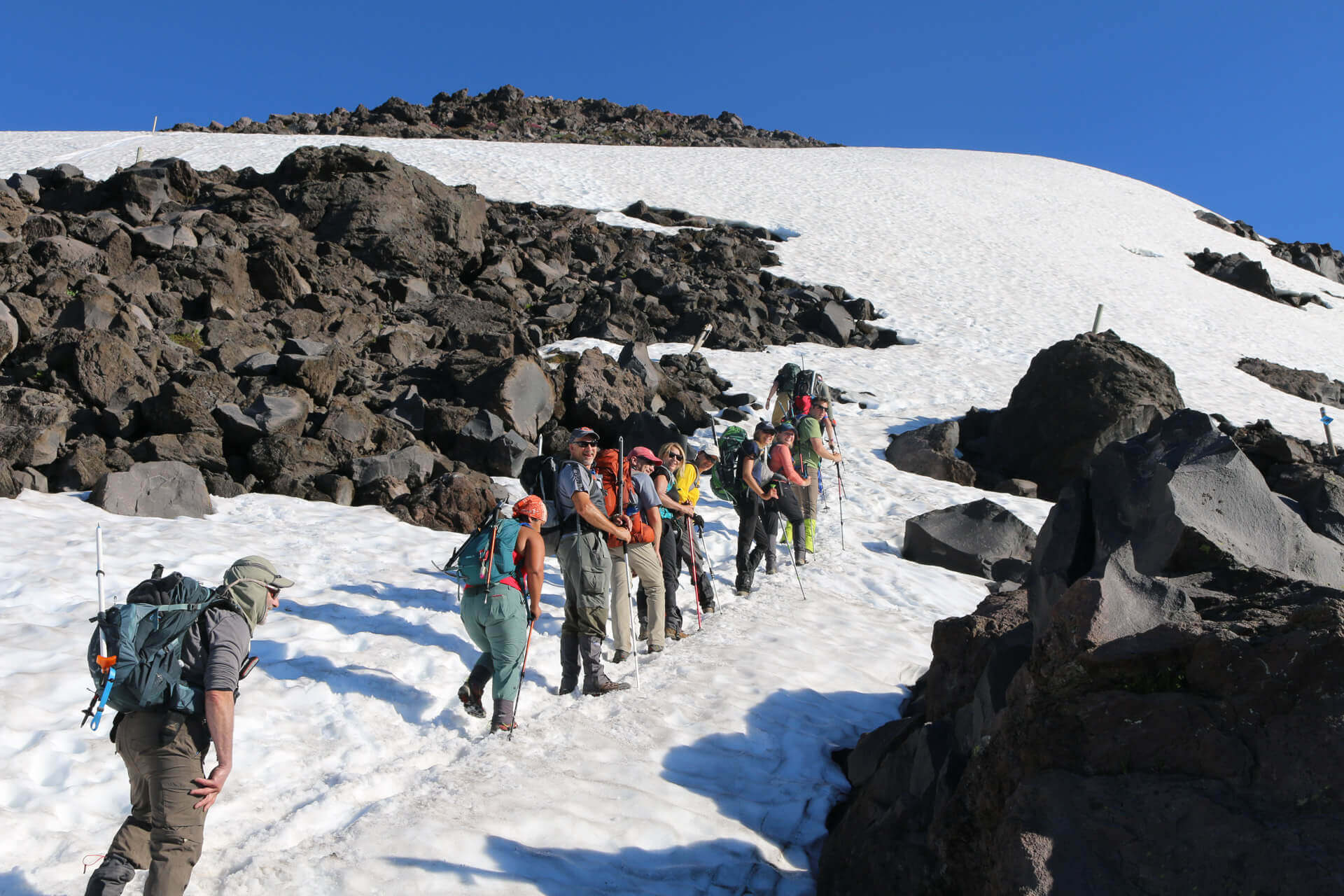
Mount St. Helensis one of the easiest volcano climbs in Washington thanks to limited avalanche danger and crevasse exposure and attracts both beginning and experienced mountaineers. Although it’s climbable year-round, late spring through early fall is the most popular time. Most climbers use the Monitor Ridge Route from Climbers Bivouac. The non-technical nature of this route, which takes between seven and 13 hours, lends itself to beginners. However, climbers need to scramble up steep sections and be fit enough to climb 4,500 feet in five miles to the crater rim at 8,365 feet elevation.
Travel Tip: Climbing permits are always required. For climbers who want support, the Mount St. Helens Institute guides trips to the summit.
Go Mountain Biking
Intermediate and advanced riders can enjoy a number of iconic and popular mountain bike trails in the area. Mostly singletrack, the Ape Canyon to Plains of Abraham out-and-back ride (21 miles, 2,700 feet of elevation gain) entails a long, steady climb out of the heavily forested Ape Canyon to the moonscape of the blast zone, which becomes rife with wildflowers in the spring.
Southeast of Mount St. Helens, the forested Lewis River Trail (28 miles, 2,700 feet of elevation gain) skirts a river over rolling banks and chunky technical sections. For a guided trip, Trans Cascadia Excursions leads one-day rides on Strawberry Mountain through the blast zone.
Also See: Explore Washington’s Epic Mountain Biking Trails
Visit a Viewpoint
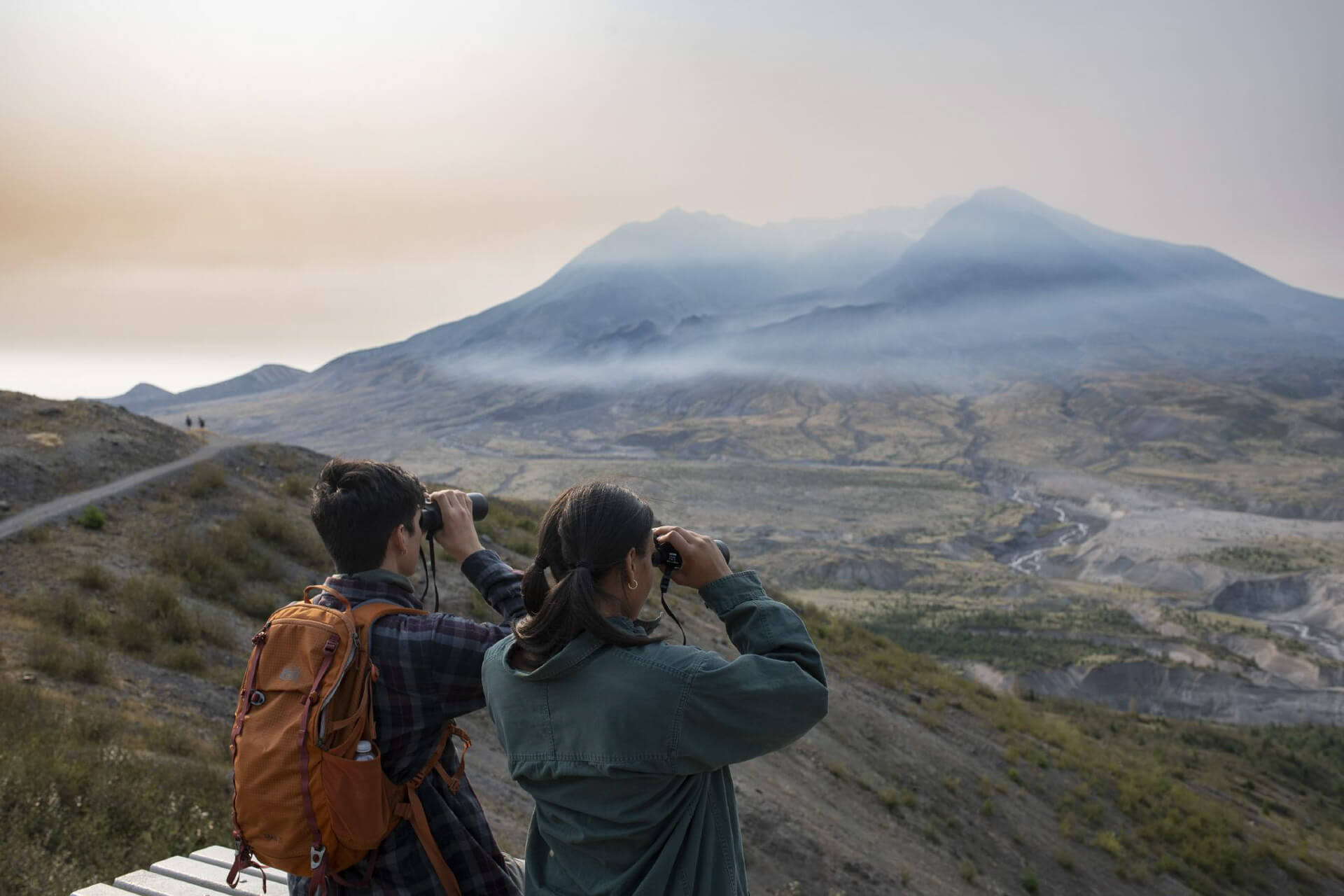
Within the Mount St. Helens National Volcanic Monument, there are a number of spectacular viewpoints that don’t require hiking. Although currently closed due to a landslide, the Johnston Ridge Observatory is situated in the heart of the blast zone and enjoys expansive views of the volcano and crater. A mile from the observatory, Loowit Viewpoint has vistas across plains of pumice to the lava dome inside the crater.
Five miles north of Mount St. Helens, climb a 368-step sand ladder for magnificent views at the Windy Ridge Interpretive Site, which not only has close-up crater views, but also a panorama of Spirit Lake and now-greening pumice fields left in the wake of the eruption.
Learn Something New
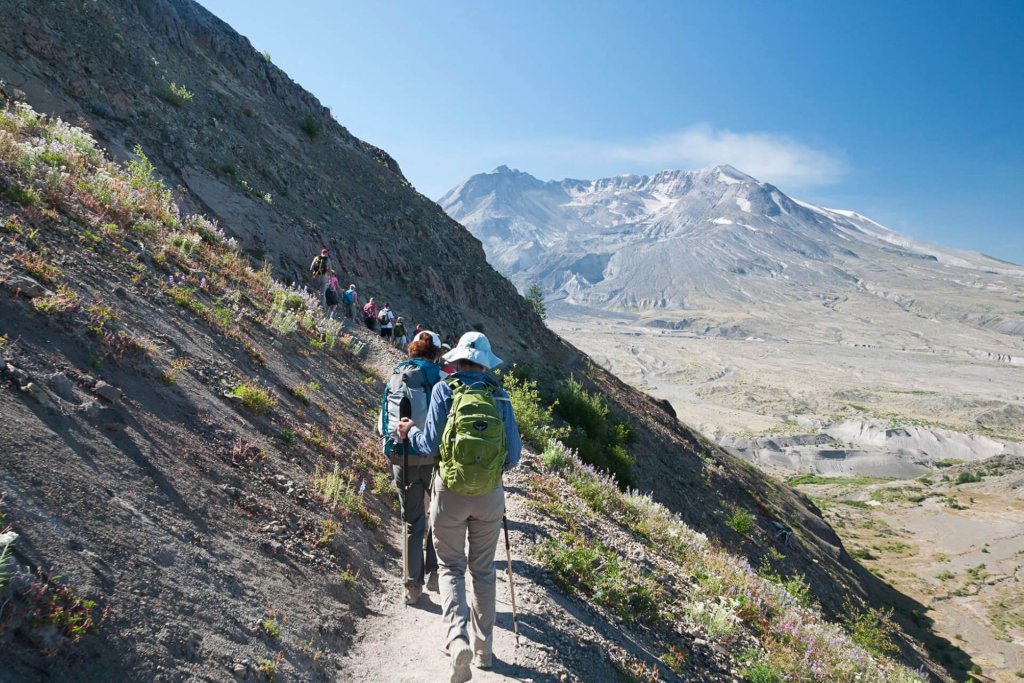
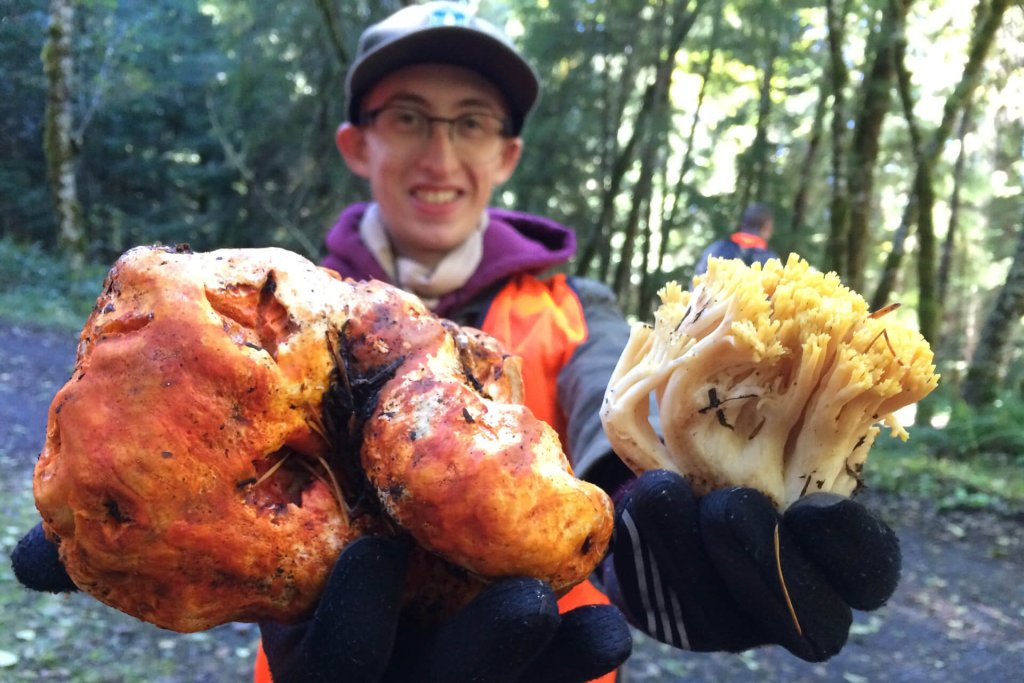
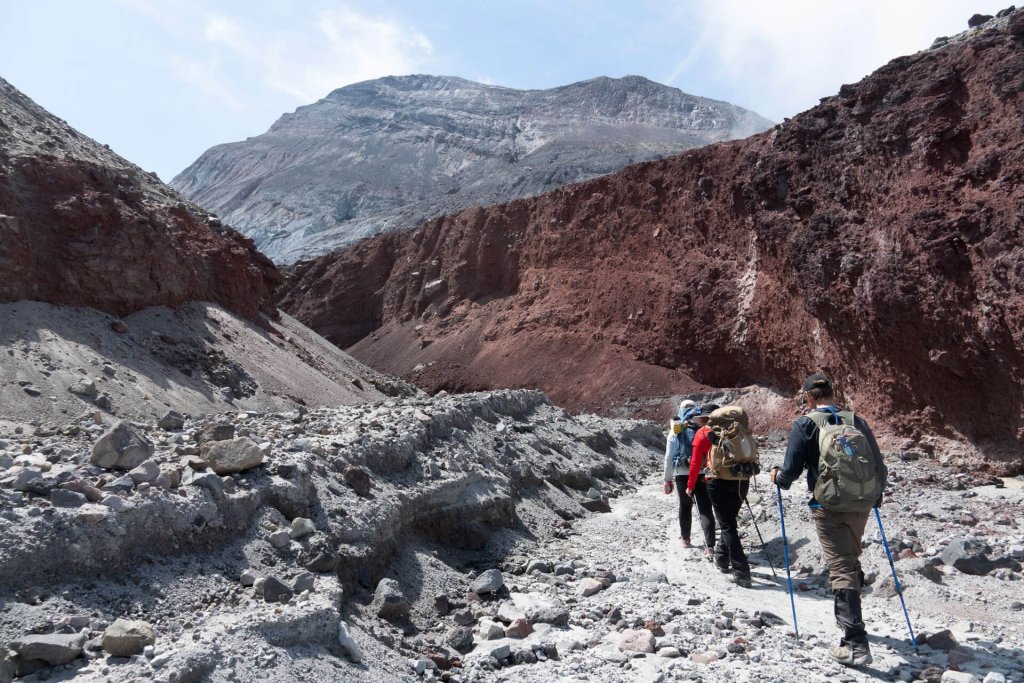
In 1996, the Mount St. Helens Institute (hosted at the Science and Learning Center at Coldwater) opened its doors with the goal of deepening the public’s understanding of the Pacific Northwest’s most active volcano. The institute hosts ecology programs for kids, family camps, and guided daylong or multi-day adventures, from mushroom hunting and photography hikes to snowshoeing and eruption walks with geologists. Drop into other learning centers along the Spirit Lake Memorial Highway – including the Mount St. Helens Visitors Center, the Forest Learning Center, and Johnston Ridge Observatory (currently closed due to a landslide).
Go Fishing
The lakes and rivers around Mount St. Helens are hallowed destinations for anglers. Just south of Mount St. Helens, Merrill Lake is a haven for fly fishing; this catch-and-release-only lake is heralded for its abundant trout. Spring through fall, the Lewis River is known for its robust salmon and steelhead runs. The river is dammed at three different points – Yale Lake, Swift Reservoir, and Lake Merwin – where anglers can catch kokanee, tiger muskies, and rainbow trout. Columbia River Fishing Guides lead salmon and steelhead expeditions on the Lewis River.
Enjoy Kayaking and Paddleboarding
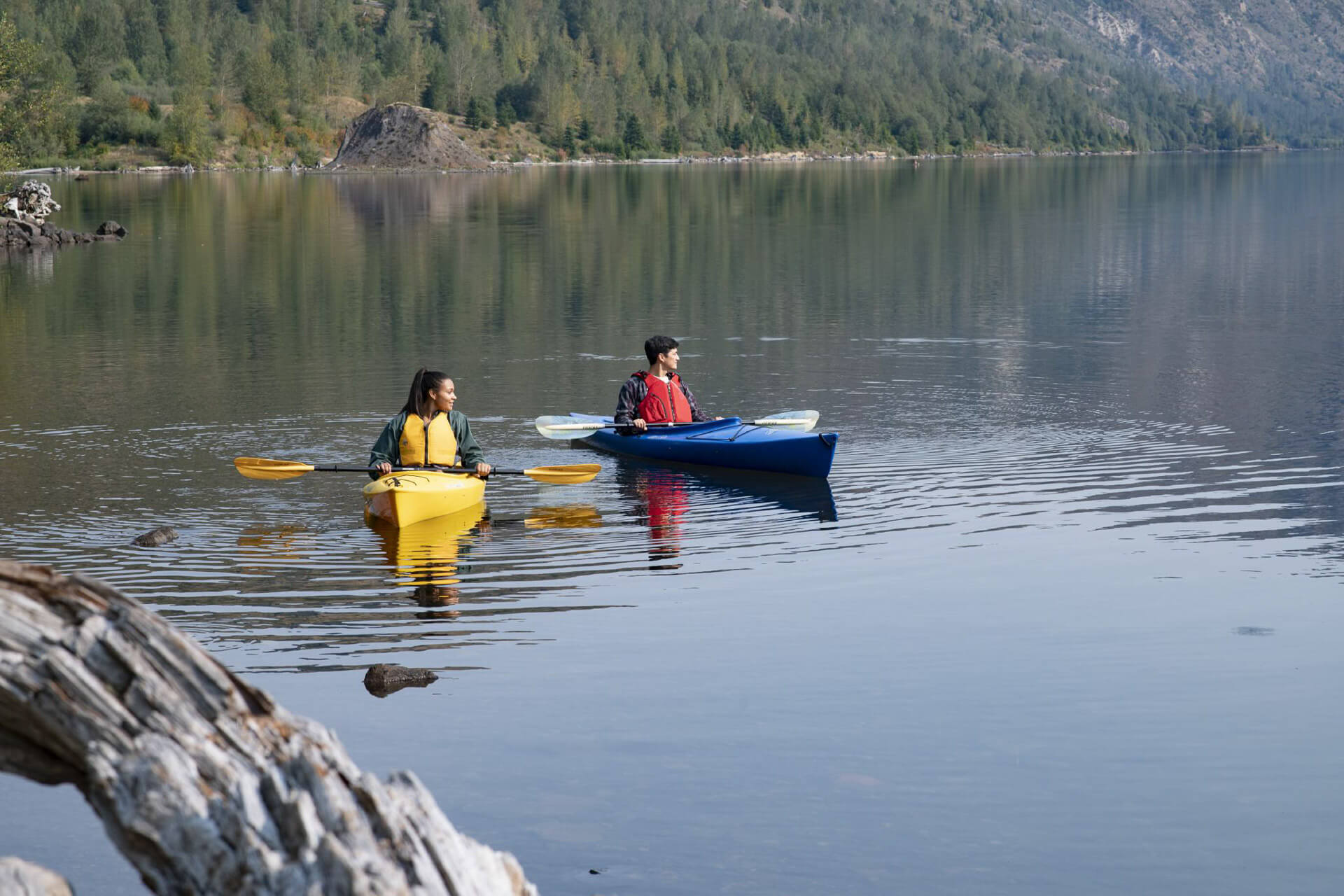
Mountain lakes with easy launching options make for lovely kayaking and paddleboarding. With no motorized boats allowed, clear Coldwater Lake provides a serene paddle surrounded by forest and mountains. For those who want to hit the water but don’t have the gear, head to Silver Lake Resort where they rent canoes and kayaks as well as pedal boats and pontoons.
Enjoy Winter Recreation
When snow blankets the slopes of Mount St. Helens, the party is just getting started. At the Marble Mountain SnoPark, cross-country skiers and snowshoers will find around 36 miles of trails (some groomed) and snowmobilers have access to 25 groomed miles. The June Lake trail provides a mellow and incredibly scenic out-and-back snowshoe option (5 miles, 500 feet of elevation gain). Cougar SnoPark caters primarily to snowmobilers and features 25 miles of trail.
Travel Tip: SnoPark permits are required, and it’s advised to check the avalanche report before heading out. Call Mount St. Helens at 360-499-7800 for grooming status updates.
Where to Stay near Mount St. Helens
Camping
While there is no camping within the monument boundaries, there are several camping options surrounding the monument. Seaquest State Park near Silver Lake boasts a pedestrian tunnel that connects to the Mount St. Helens Visitor Center and the shoreline interpretive trail. In Gifford Pinchot National Forest, the Lower Falls Campground on the Lewis River operates May through October, while northeast of the mountain you’ll find Tower Rock Campground.
Hotels and Resorts
Along the Interstate 5 corridor to the west, visitors can find a slew of traditional hotel options. About midway between the northern and southern Mount St. Helens access roads off Interstate 5, the Kalama Harbor Lodge, a river-view McMenamins property, has uniquely decorated guest rooms showcasing the local history and characters of Kalama.
In Cougar on Yale Lake, the Lone Fir Resort caters to the outdoor set, renting mountaineering gear and offering cozy cabin accommodations along with tent sites. Along the Spirit Lake Memorial Highway to the north, Eco Park Resort is an 80-acre forested property that has 12 miles of private trails. Mostly powered by solar and propane, the resort has a cafe on site, and visitors can stay in cabins or camp out. Further west, Silver Lake Resort is open year-round and is all about fishing and lake life.
Mount St. Helens FAQ
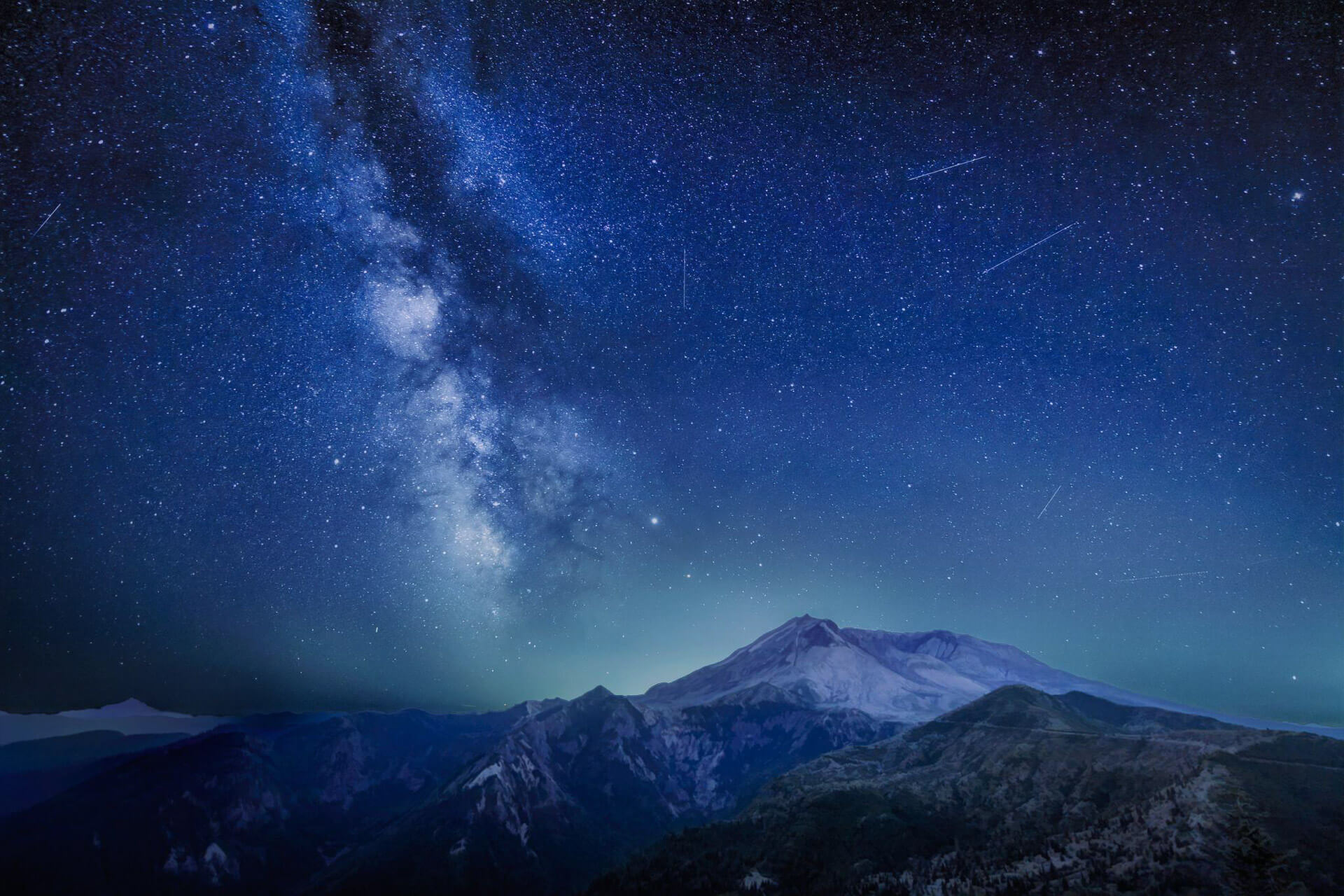
What are the entrance fees and operating hours?
On the east and south sides of the monument, a National Forest Recreation Pass ($5 day per vehicle, $30 annual) is required. Self-service pay stations and Forest Service offices sell the passes. On the west side, a Monument Pass ($8 per adult, 15 and younger free) is required at the Johnston Ridge Observatory and adjacent trailheads; purchase them at the observatory. America the Beautiful passes also work. The Mount St. Helens Visitor Center at Silver Lake is open from 9 a.m. to 5 p.m. in the summer and 9 a.m. to 4 p.m. in the winter (closed Mondays and Tuesdays).
When did Mount St. Helens erupt?
On May 18, 1980, a magnitude 5.1 earthquake triggered one of the world’s largest recorded landslides leading to the eruption of Mount St. Helens. The eruption was one of the most powerful volcanic blasts in American history. In its wake, scientists and visitors alike have been given the opportunity to witness biodiversity slowly reclaim an area of catastrophic devastation. In 1982, President Ronald Reagan set aside 110,000 acres around the volcano, creating the Mount St. Helens National Monument.
Is Mount St. Helens pet-friendly?
Because of the delicate nature of the ecology within Mount St. Helens National Monument, pets are prohibited in certain areas (see the Forest Service map). Pets are allowed on paved roads, campgrounds, and picnic areas, and are required to be on leash at all times.
Can you climb to the top of Mount St. Helens? Do you need a permit?
Yes and yes. Most climbers use the Monitor Ridge Route from Climbers Bivouac, a non-technical route that requires less gear. A permit is always required.
About the Author
Ellee Thalheimer is a freelance writer and guidebook author based in the Pacific Northwest who has contributed to publications like Lonely Planet Guidebooks, Alaska Airlines Magazine, and Adventure Cyclist Magazine. When she can’t get outside, she writes fiction, drinks local IPAs, and perfects her handstands.
